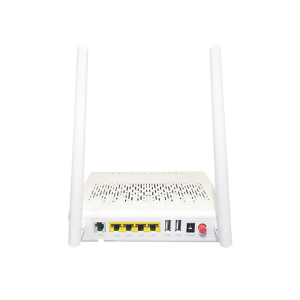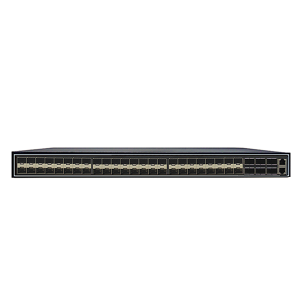Products
Layer 3 Switch with IPv4/IPv6 Static Routing Function: Improving Network Efficiency
Layer 3 Switch with IPv4/IPv6 Static Routing Function: Improving Network Efficiency,
,
Main features
S5000 series full Gigabit access + 10G uplink Layer3 switch, leading in the development of energy saving function, is the next generation of intelligent access switches for carrier resident networks and enterprise networks. With rich software functions, layer 3 routing protocols, simple management, and flexible installation, the product can meet various complex scenarios.
A Layer 3 switch with IPv4/IPv6 static routing function is a powerful network device that can improve network efficiency and performance. It combines the functionality of a Layer 2 switch and router, making it ideal for modern networks requiring advanced routing capabilities.
One of the main functions of a Layer 3 switch is its ability to perform static routing. Static routing allows network administrators to manually configure routing tables, enabling efficient and direct communication between different networks. With this feature, Layer 3 switches can determine the best path for data packets, enabling faster transmission and reducing network congestion.
Layer 3 switches with IPv4/IPv6 static routing bring additional benefits by supporting both IPv4 and IPv6 protocols. As the world transitions to IPv6, which offers a larger address space compared to IPv4, the switch ensures that the network can accommodate the growing number of devices and provide seamless connectivity.
In addition, this advanced switch supports network segmentation to enhance security and optimize network performance. By dividing the network into smaller subnets, administrators can enforce different security policies and improve traffic flow. With the help of the static routing function of the layer-3 switch, traffic can be effectively guided between these subnets to ensure that the data reaches the destination accurately and safely.
Another advantage of a Layer 3 switch is its scalability. As the network expands, Layer 3 switches can easily handle increased traffic and growing routing table sizes. Its robust architecture allows for seamless integration with other network devices such as firewalls and virtual private network (VPN) servers, further enhancing network security and performance.
In summary, a Layer 3 switch with IPv4/IPv6 static routing has many advantages in terms of network efficiency and performance. Whether routing packets between different networks, supporting the latest IPv6 protocol, or providing network segmentation and scalability, this switch has proven to be an invaluable asset for modern networks. Network administrators can rely on this powerful device to enhance network operations and ensure smooth, uninterrupted communications between devices and networks.
|
Product Specifications |
|
|
Energy saving |
Green Ethernet line sleep capability |
|
MAC Switch |
Statically configure MAC address Dynamically learning MAC address Configure aging time of MAC address Limit the number of learned MAC address MAC address filtering IEEE 802.1AE MacSec Security control |
|
Multicast |
IGMP v1/v2/v3 IGMP Snooping IGMP Fast Leave Multicast policies and multicast number limits Multicast traffic replicate across VLANs |
|
VLAN |
4K VLAN GVRP Functions QinQ Private VLAN |
|
Network Redundancy |
VRRP ERPS automatic ethernet link protection MSTP FlexLink MonitorLink 802.1D(STP)、802.1W(RSTP)、802.1S(MSTP) BPDU protection, root protection, loop protection |
|
DHCP |
DHCP Server DHCP Relay DHCP Client DHCP Snooping |
|
ACL |
Layer 2, Layer 3, and Layer 4 ACLs IPv4、IPv6 ACL VLAN ACL |
|
Router |
IPV4/IPV6 dual stack protocol Static routing RIP、RIPng、OSFPv2/v3、PIM dynamic routing |
|
QoS |
Traffic classification based on fields in L2/L3/L4 protocol header CAR traffic limit Remark 802.1P/DSCP priority SP/WRR/SP+WRR queue scheduling Tail-drop and WRED congestion avoidance mechanisms Traffic monitoring and traffic shaping |
|
Security Feature |
ACL recognition and filtering security mechanism based on L2/L3/L4 Defends against DDoS attacks, TCP SYN Flood attacks, and UDP Flood attacks Suppress multicast, broadcast, and unknown unicast packets Port isolation Port security, IP+MAC+ port binding DHCP sooping、DHCP option82 IEEE 802.1x certification Tacacs+/Radius remote user authentication, Local user authentication Ethernet OAM 802.3AG (CFM), 802.3AH (EFM) various Ethernet link detection |
|
Reliability |
Link aggregation in static /LACP mode UDLD one-way link detection Ethernet OAM |
|
OAM |
Console、Telnet、SSH2.0 WEB Management SNMP v1/v2/v3 |
|
Physical Interface |
|
|
UNI Port |
48*GE, RJ45 |
|
NNI Port |
6*10GE, SFP/SFP+ |
|
CLI Management port |
RS232, RJ45 |
|
Work Environment |
|
|
Operating Temperature |
-15~55℃ |
|
Storage Temperature |
-40~70℃ |
|
Relative Humidity |
10%~90%(No condensation) |
|
Power Consumption |
|
|
Power Supply |
AC input 90~264V, 47~67Hz(dual power supply optional) |
|
Power Consumption |
full load ≤ 53W, idle ≤ 25W |
|
Structure Size |
|
|
Case shell |
metal shell, air cooling and heat dissipation |
|
Case dimension |
19 inch 1U, 440*290*44 (mm) |
Products categories
-

Phone
-

Email
-

Whatsapp
-

Skype
-

Top


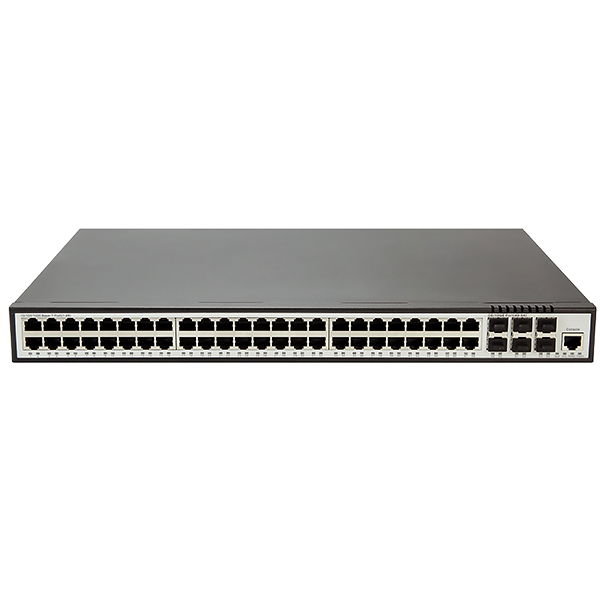
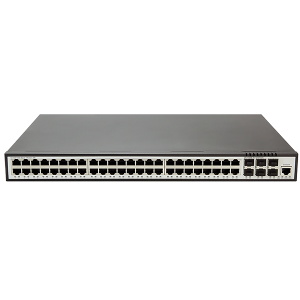
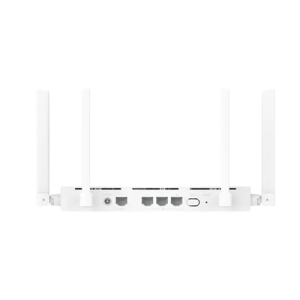
11-300x300.png)
